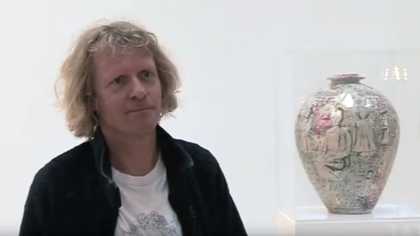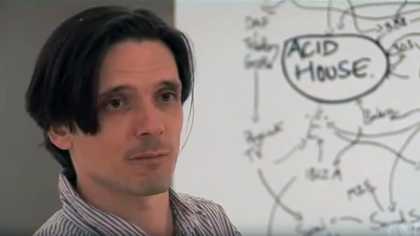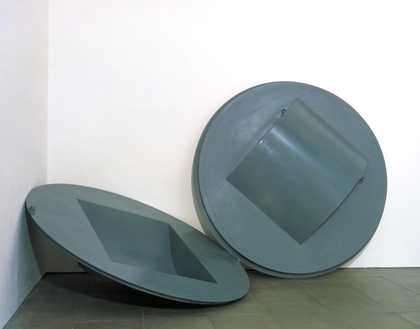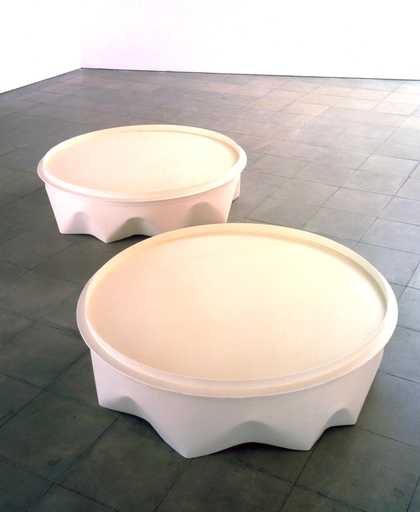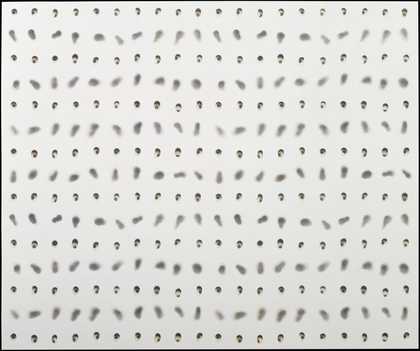Grenville Davey: I am putting up, installing, two pieces for the Turner Prize exhibition. I am here with the Curator and the Art Handlers to basically just oversee the installation. One piece hasn’t been shown at the Tate before so, it’s a line drawing in steel so I have to place each piece in relation to the other. Down about six inches. Do you want me to put a mark on it? Yes please. 45 degrees slightly going to me. That’s that corner yeah. I won’t make working drawings before I start making, I make directly with material so there’s always something thrown up out of this business, the day to day business of working in a studio, so it could be making steel, making kind of fairly lightweight steel work is just like using paper and a glue gun and a pair of scissors but on a bigger scale so you can put something together very quickly and take it apart. I usually work on four or five things at once, so if I get stuck and have to kind of work my way out of a problem I go to something else or go to an engineer or supplier or find something that grabs my attention, go and see some art, you know, that’s how I start. The work has quite strong relationships with some things that you might see in the world and it’s a celebration of those daily or almost sometimes mundane things that you might come across, you know, if you kind of double take quite often. The table piece is a direct relationship to a period in my life where I worked at the same spot for five years and got to know and negotiate the same area of workstation very well. I think that’s a common thing in human life these days is you know the territory very intimately so a key to understanding the work is that. The body of the table piece is painted and it’s got a salted top which is essentially me laying on about a quarter of an inch of salt water and then allowing the water to evaporate just leaving the salt to describe the level. The Turner Prize of ’92 it seems like a long time ago, it’s always ever present. I enjoyed it immensely, the whole thing, it got very, very noisy but I had a great show at Chisenhale Gallery at London around the same time and the work was going very well so it came at a high point. From an artist’s perspective, I didn’t see it as a competition. I don’t think anybody in the group, certainly a group of artists in that time, the short list of artists didn’t see it as a competition, publicly at least, and I think you either do it or you don’t so I thought it was a celebration of something and I think it brings contemporary art really into a very sharp focus which can’t be a bad thing.

